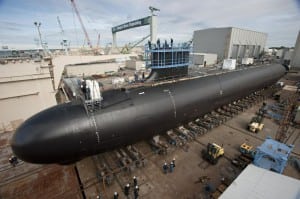
The U.S., U.K and Australia confirmed Tuesday they are cooperating on hypersonic and counter-hypersonic weapons, autonomous underwater vehicles, and cyber capabilities in addition to a new nuclear-powered submarine for Australia. President Biden, U.K. Prime Minister Boris Johnson and Australian Prime Minister Scott Morrison issued a joint leaders statement Tuesday noting they assessed submarine progress under AUKUS, are “pleased” with current progress, and are committing to cooperation on several other technologies. “We also committed today to commence new trilateral cooperation on…

 By
By 











